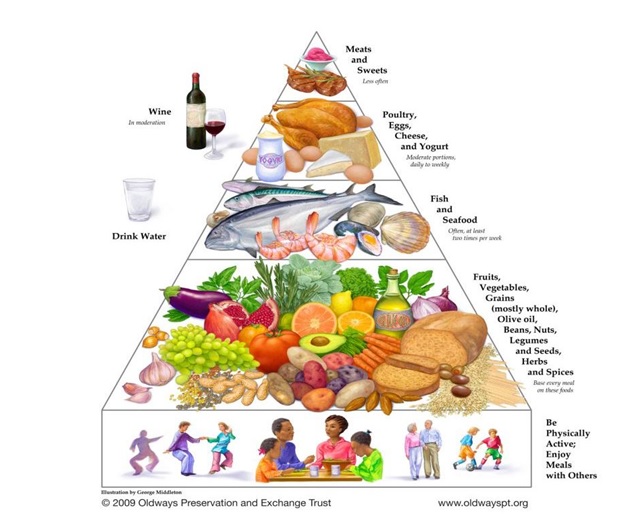
Food Pyramid (Mediterranean Diet) – Greece
This pyramid continues to be a well-known guide to what is now universally recognized as the “gold standard” eating pattern that promotes lifelong good health. It has been widely used for years by consumers, educators, and health professionals alike to implement healthier eating habits. While this Greek pyramid may look like the traditional one we know, it is actually based off the Mediterranean diet incorporating olive oil, seasonal fruits and vegetables, and seafood. It is broken down into 12 food groups with advice on consumption. An abundance of food from plant sources, including fruits and vegetables, potatoes, breads and grains, beans, nuts, and seeds.
- Emphasis on a variety of minimally processed and, wherever possible, seasonally fresh and locally grown
- Olive oil as the principal fat, replacing other fats and oils (including butter and margarine).
- Total fat ranging from less than 25 percent to over 35 percent of energy, with saturated fat no more than 7 to 8 percent of energy (calories).
- Daily consumption of low to moderate amounts of cheese and yogurt
- Twice-weekly consumption of low to moderate amounts of fish
- Fresh fruit as the typical daily dessert; sweets with a significant amount of sugar and saturated fat consumed not more than a few times per week.
- Red meat a few times per month
- Regular physical activity at a level which promotes a healthy weight, fitness and well-being.
- Moderate consumption of wine.
Author: Sumana Rao | Posted on: January 8, 2016




















Write a comment